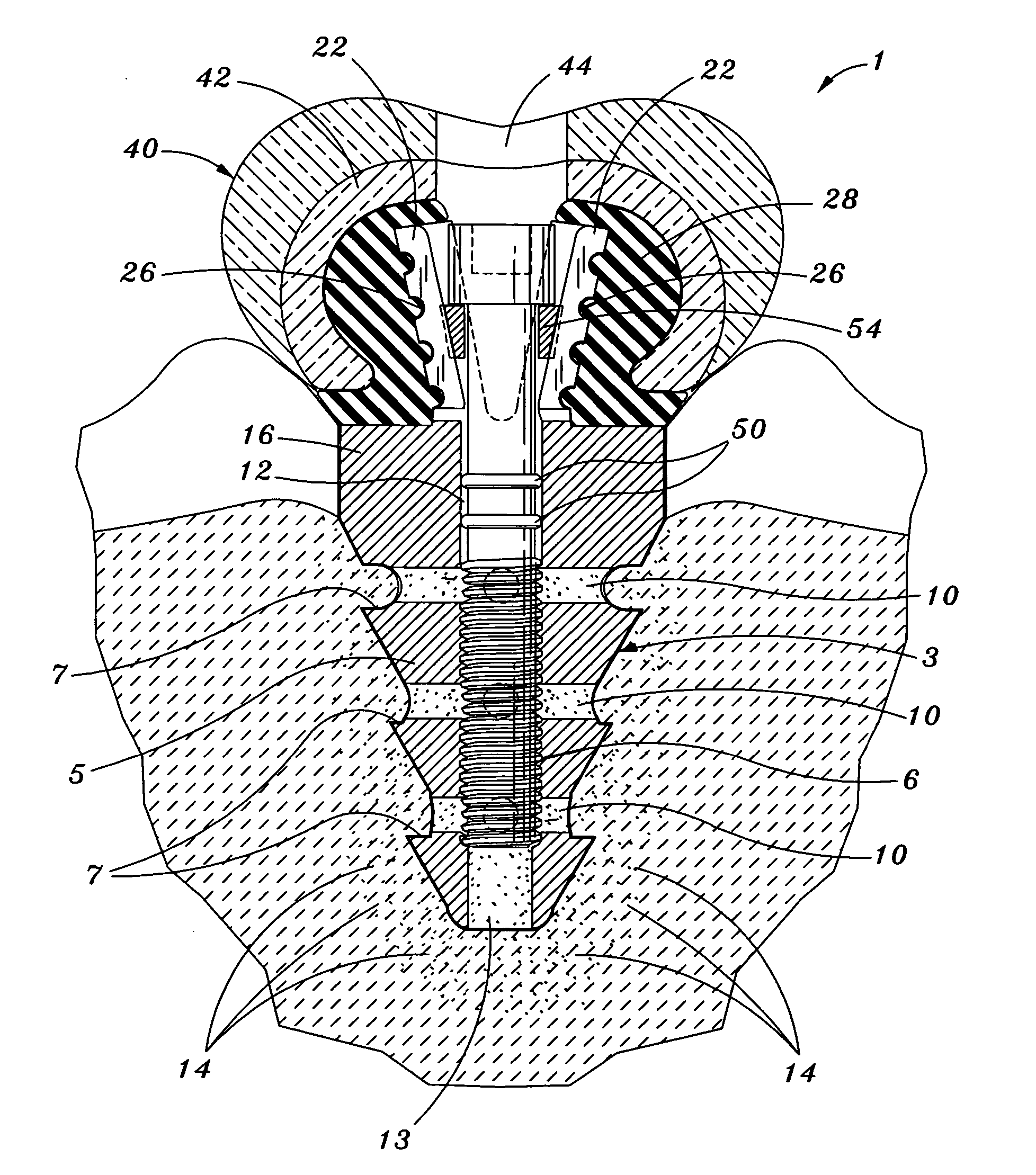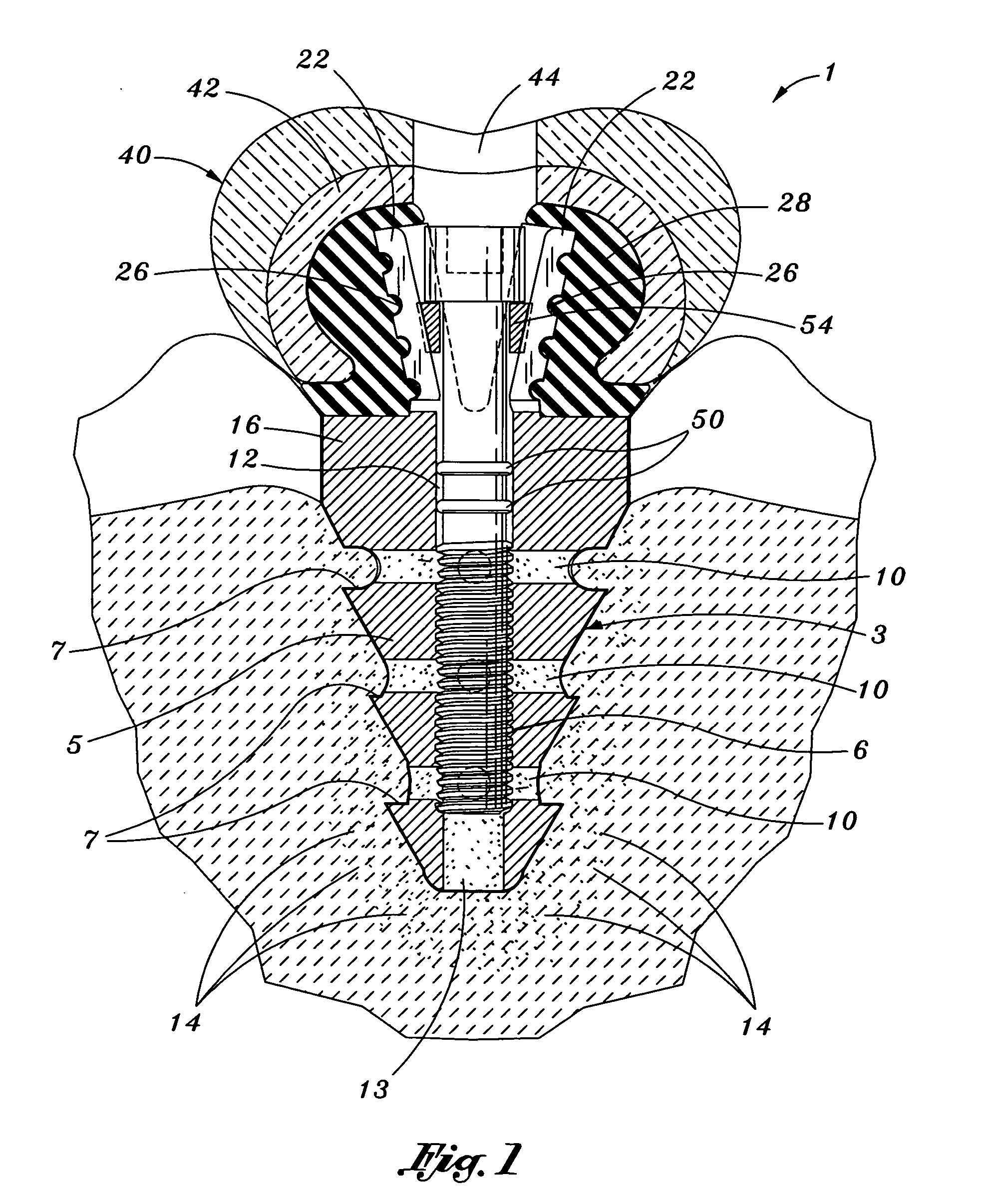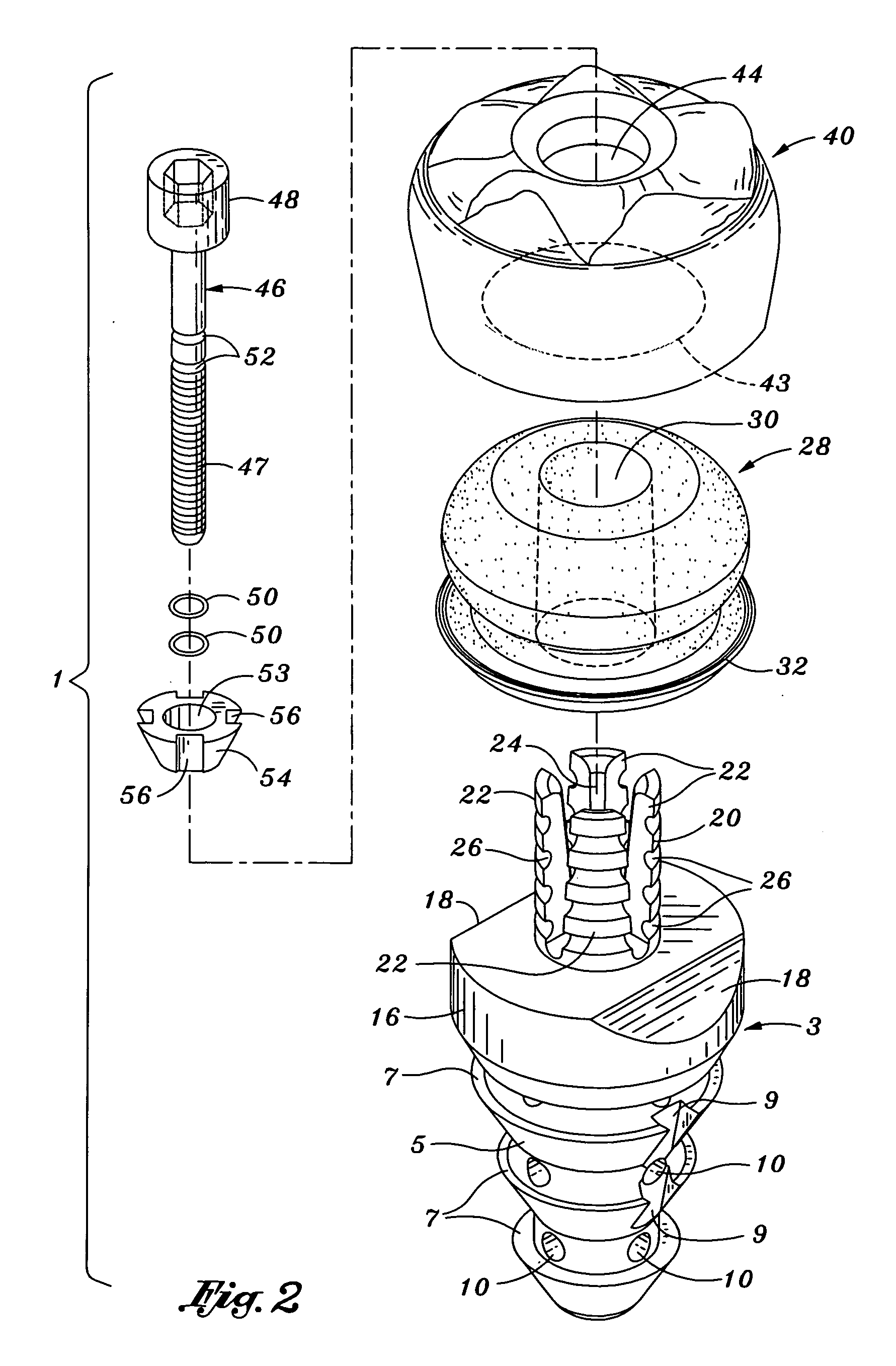Biofunctional dental implant
a dental implant and biofunctional technology, applied in the field of biofunctional dental implants, can solve the problems of common conventional crown screws, screw loosening and screw breakage, and sometimes broken screws
- Summary
- Abstract
- Description
- Claims
- Application Information
AI Technical Summary
Benefits of technology
Problems solved by technology
Method used
Image
Examples
Embodiment Construction
[0027] Referring initially to FIGS. 1-5 of the drawings, there is shown a biofunctional dental implant 1 which forms a first preferred embodiment of this invention. Dental implant 1 is suitable for use in the mouths of both humans and animals. The implant 1 includes a root portion 3 that is preferably manufactured from a biocompatible metallic (e.g., titanium or titanium alloy) or ceramic material that is adapted to be implanted and locked in the bone structure of a dental patient. The root portion 3 has a tapered implant casing 5 including a series of sharp edged barbs 7 extending around the exterior thereof and a set of screw threads 6 formed at the interior along a longitudinally extending channel 12. As is best shown in FIG. 1, the implant casing 5 of root portion 3 is installed within an implant socket that is made in the patient's bone structure so as to be able to support a crown portion (designated 40) above the gum line. The peripheral barbs 7 of implant casing 5 enable the...
PUM
 Login to View More
Login to View More Abstract
Description
Claims
Application Information
 Login to View More
Login to View More - R&D
- Intellectual Property
- Life Sciences
- Materials
- Tech Scout
- Unparalleled Data Quality
- Higher Quality Content
- 60% Fewer Hallucinations
Browse by: Latest US Patents, China's latest patents, Technical Efficacy Thesaurus, Application Domain, Technology Topic, Popular Technical Reports.
© 2025 PatSnap. All rights reserved.Legal|Privacy policy|Modern Slavery Act Transparency Statement|Sitemap|About US| Contact US: help@patsnap.com



